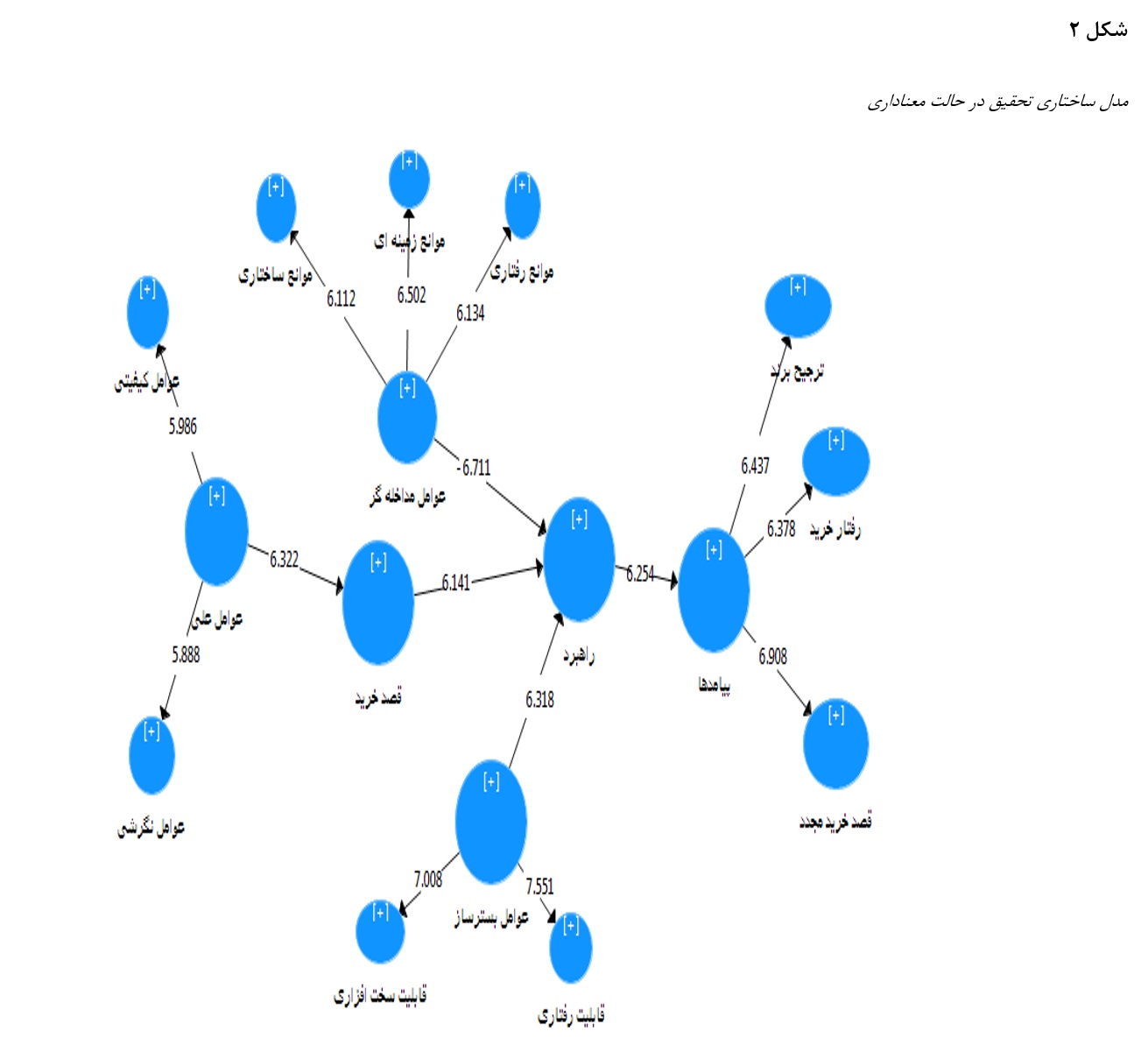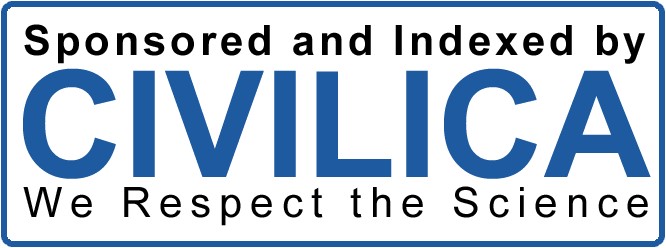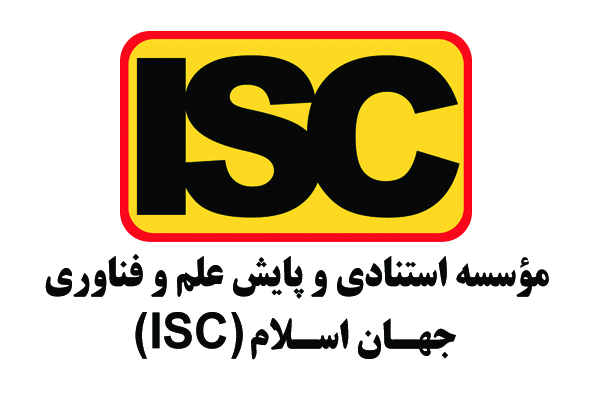Designing a Model of Factors Influencing Customers' Purchase Intent with an Explanation of the Role of Electronic Word-of-Mouth Advertising
Keywords:
Purchase Intent, Electronic Word-of-Mouth Advertising, Buying Behavior, Grounded Theory, Bank MelliAbstract
With new digital technologies, the consumer decision-making process is a continuous and interactive activity that requires sellers to adopt a more comprehensive mindset, and marketers to develop more creative strategies to outperform competitors in a competitive environment. This study aims to design a model of factors influencing customers' purchase intent by elucidating the role of electronic word-of-mouth advertising in Bank Melli Iran. Since the bank's marketers seek to establish profitable relationships with customers, advancements in technology provide them an opportunity to offer new services through better understanding and increased interactions with customers. The research methodology is a mixed-methods approach with inductive reasoning in the qualitative section and deductive reasoning in the quantitative section, and it is fundamental in terms of its objective. In the qualitative section, grounded theory was employed. Data in the qualitative section were obtained through 14 semi-structured interviews with experts from Bank Melli, including managers, heads of the bank, and marketers, selected using purposive sampling and snowball sampling until theoretical saturation was reached. In the quantitative section, data were collected from 417 customers of selected branches using a researcher-made questionnaire based on non-probability convenience sampling. To analyze the data, MAXQDA software was used in the qualitative section, and SPSS23 statistical software was employed for descriptive statistics, while Smart PLS3 statistical software was used for inferential statistics through partial least squares structural equation modeling (PLS-SEM). Using grounded theory, a model of factors influencing customers' purchase intent was presented. The model includes causal factors, contextual factors, intervening factors, strategies, and outcomes of purchase intent. Causal factors encompass quality factors and attitudinal factors; contextual factors include hardware and software capabilities; and intervening factors influencing customers' purchase intent consist of structural barriers, contextual barriers, and behavioral barriers. In the quantitative section, the model was tested in the sample population. The results indicated that the model has an appropriate fit. Bank Melli managers and decision-makers can use the findings of this study to develop more effective marketing communications to attract and retain customers, leading to positive and effective outcomes for Bank Melli.
Downloads
References
Al-Zyoud, M. F. (2021). The impact of gamification on consumer loyalty, electronic word-of mouth sharing and purchase
behavior. Journal of Public Affairs, 21(3), e2263. https://doi.org/10.1002/pa.2263
Alharbi, M. K., Aziz, Y. A., Yusof, R. N. R., & Hamid, A. B. A. (2020). Moderating role of trust between eWOM
communication and purchase intention. Journal of Chemical Information and Modeling, 1(1), 44-53.
http://repository.unj.ac.id/18540/7/DAFTAR%20PUSTAKA.pdf
Alrwashdeh, M., Emeagwali, O., & Aljuhmani, H. (2019). The effect of electronic word of mouth communication on
purchase intention and brand image: An applicant smartphone brands in North Cyprus. Management Science Letters,
Bhat, N. Y., & Bhat, S. (2020). The influence of Electronic word of mouth (Ewom) on Consumers Purchase Intention:
A review and analysis of the existing literature. Iosr J. Eng, 10(6).
https://www.academia.edu/download/63787660/S020197107_author_nazia_yousuf20200630-85292-d8wsva.pdf
Bilal, M., Jianqiu, Z., Dukhaykh, S., Fan, M., & Trunk, A. (2021). Understanding the Effects of eWOM Antecedents on
Online Purchase Intention in China. Information, 12(5).
Bong, W. Z. (2017). Influence of social media marketing, brand loyalty and eWOM towards consumers’ purchase
intention UTAR]. http://eprints.utar.edu.my/2791/1/13UKM06827_Report.pdf
Chen, S.-C., & Lin, C.-P. (2019). Understanding the effect of social media marketing activities: The mediation of social
identification, perceived value, and satisfaction. Technological Forecasting and Social Change, 140, 22-32.
https://www.sciencedirect.com/science/article/pii/S0040162518311570
Cheng, G., Cherian, J., Sial, M. S., Mentel, G., Wan, P., Álvarez-Otero, S., & Saleem, U. (2021). The Relationship
between CSR Communication on Social Media, Purchase Intention, and E-WOM in the Banking Sector of an
Emerging Economy. Journal of Theoretical and Applied Electronic Commerce Research, 16(4), 1025-1041.
https://www.mdpi.com/0718-1876/16/4/58
Dobbelstein, T., & Lochner, C. (2023). Factors influencing purchase intention for recycled products: A comparative
analysis of Germany and South Africa. Sustainable Development, 31(4), 2256-2277. https://doi.org/10.1002/sd.2504
Ebrahimi, P., Khajeheian, D., Soleimani, M., Gholampour, A., & Fekete-Farkas, M. (2023). User engagement in social
network platforms: what key strategic factors determine online consumer purchase behaviour? Economic ResearchEkonomska Istraživanja, 36(1), 2106264. https://doi.org/10.1080/1331677X.2022.2106264
Erkan, I., & Evans, C. (2016). The influence of eWOM in social media on consumers’ purchase intentions: An extended
approach to information adoption. Computers in human Behavior, 61, 47-55.
https://www.sciencedirect.com/science/article/pii/S0747563216301650
Farzin, M., & Fattahi, M. (2018). eWOM through social networking sites and impact on purchase intention and brand
image in Iran. Journal of Advances in Management Research, 15(2), 161-183. https://doi.org/10.1108/JAMR-05-
-0062
Gil-Cordero, E., Ledesma-Chaves, P., Yoo, S., & Han, H. (2023). Luxury tourism and purchase intention factors: a mixed
approach applied to luxury goods. Humanities and Social Sciences Communications, 10(1), 472.
https://doi.org/10.1057/s41599-023-01981-8
Jamshidi, A., & Östensen, O. (2019). Does social media advertising influence purchasing behavior via EWOM?: A survey
study on millennials at LTU. In.
Javed, M., Tučková, Z., & Jibril, A. B. (2020). The Role of Social Media on Tourists’ Behavior: An Empirical Analysis
of Millennials from the Czech Republic. Sustainability, 12(18), 7735. https://www.mdpi.com/2071-1050/12/18/7735
Kajtazi, K., & Zeqiri, J. (2020). The effect of e-WOM and content marketing on customers' purchase intention.
International Journal of Islamic Marketing and Branding, 5(2), 114-131.
https://doi.org/10.1504/IJIMB.2020.111144
Kesharwani, S. (2020). E-service quality in banking industry-a review. Global Journal of Enterprise Information System,
(2), 111-118. https://gjeis.com/index.php/GJEIS/article/download/571/539
Marceda Bach, T., da Silva, W. V., Mendonça Souza, A., Kudlawicz-Franco, C., & da Veiga, C. P. (2020). Online
customer behavior: perceptions regarding the types of risks incurred through online purchases. Palgrave
Communications, 6(1), 13. https://doi.org/10.1057/s41599-020-0389-4
Maslim, H., & Pasaribu, L. H. (2021). The Influences of Social Media Marketing, Service Quality and EWOM on
Purchase Intention. Enrichment: Journal of Management, 12(1), 18-23.
http://enrichment.iocspublisher.org/index.php/enrichment/article/view/147
Mion, K. (2021). The Influence of eWOM on Young Female Consumers’ Purchase Intention in the Cosmetic Industry in
South Korea.
te_id=20&file_no=1
Moisescu, O.-I., Dan, I., & Gică, O.-A. (2022). An examination of personality traits as predictors of electronic word-ofmouth diffusion in social networking sites. Journal of Consumer Behaviour, 21(3), 450-467.
https://doi.org/10.1002/cb.1970
Park, J., Hyun, H., & Thavisay, T. (2021). A study of antecedents and outcomes of social media WOM towards luxury
brand purchase intention. Journal of Retailing and Consumer Services, 58, 102272.
https://www.sciencedirect.com/science/article/pii/S0969698920312807
Plidtookpai, N., & Yoopetch, C. (2021). The electronic word-of-mouth (Ewom) trustworthiness, brand image and other
determinants of purchase intention of the middle class to luxury hotel services. Kasetsart Journal of Social Sciences,
(1), 61–68-61–68. https://so04.tci-thaijo.org/index.php/kjss/article/download/249437/169443/878677
Rahman, M. S., & Mannan, M. (2018). Consumer online purchase behavior of local fashion clothing brands. Journal of
Fashion Marketing and Management: An International Journal, 22(3), 404-419. https://doi.org/10.1108/JFMM-11-
-0118
Rapp, A., Trainor, K. J., & Agnihotri, R. (2010). Performance implications of customer-linking capabilities: Examining
the complementary role of customer orientation and CRM technology. Journal of Business Research, 63(11), 1229-
https://www.sciencedirect.com/science/article/pii/S0148296309002896
Saleem, A., & Ellahi, A. (2017). Influence of electronic word of mouth on purchase intention of fashion products in
social networking websites. Pakistan Journal of Commerce and Social Sciences (PJCSS), 11(2), 597-622.
https://www.econstor.eu/handle/10419/188307
Siddiqui, M. S., Siddiqui, U. A., Khan, M. A., Alkandi, I. G., Saxena, A. K., & Siddiqui, J. H. (2021). Creating Electronic
Word of Mouth Credibility through Social Networking Sites and Determining Its Impact on Brand Image and Online
Purchase Intentions in India. Journal of Theoretical and Applied Electronic Commerce Research, 16(4), 1008-1024.
https://www.mdpi.com/0718-1876/16/4/57
Stribbell, H., & Duangekanong, S. (2022). Satisfaction as a key antecedent for word of mouth and an essential mediator
for service quality and brand trust in international education. Humanities and Social Sciences Communications, 9(1),
https://doi.org/10.1057/s41599-022-01459-z
Tien, D. H., Rivas, A. A. A., & Liao, Y.-K. (2019). Examining the influence of customer-to-customer electronic wordof-mouth on purchase intention in social networking sites. Asia Pacific Management Review, 24(3), 238-249.
https://www.sciencedirect.com/science/article/pii/S1029313217301379
Uslu, A. (2020). The relationship of service quality dimensions of restaurant enterprises with satisfaction, behavioral
intention, eWOM and the moderator effect of atmosphere. Tourism & Management Studies, 16(3), 23-35.
http://www.tmstudies.net/index.php/ectms/article/view/1296
Weismueller, J., Harrigan, P., Wang, S., & Soutar, G. N. (2020). Influencer Endorsements: How Advertising Disclosure
and Source Credibility Affect Consumer Purchase Intention on Social Media. Australasian Marketing Journal,
(4), 160-170. https://doi.org/10.1016/j.ausmj.2020.03.002
Yan, X., Shah, A. M., Zhai, L., Khan, S., & Shah, S. A. A. (2018). Impact of mobile electronic word of mouth (EWOM)
on consumers purchase intentions in the fast-causal restaurant industry in Indonesia.

Downloads
Published
Submitted
Revised
Accepted
Issue
Section
License
Copyright (c) 2024 Journal of Technology in Entrepreneurship and Strategic Management (JTESM)

This work is licensed under a Creative Commons Attribution-NonCommercial 4.0 International License.










